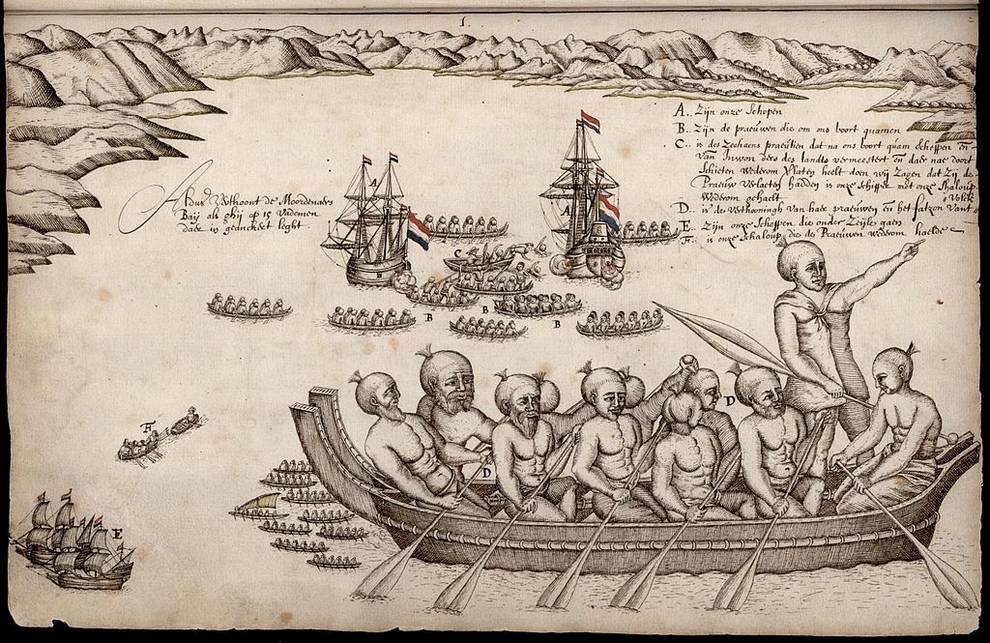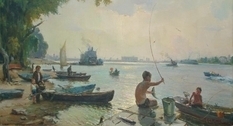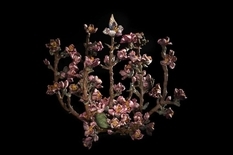
What led the discovery of Abel Tasman?
Dutch navigator Abel Tasman discovered a large island off the coast of mainland Australia, later named after him - Tasmania, November 24, 1642.
Tasmania is a fragment of Australia, which is separated from it by a strait 224 km wide. In size it is slightly larger than the island of Ceylon. Almost in the center of the island lies Lake Great.
In 1642, the Governor-General of the Dutch Indies decided to establish whether Australia was part of the southern mainland and also to find a new road from Java to Europe.
Van Diemen found a young captain Abel Tasman, who won himself the glory of a great connoisseur of the sea. Commanding the two ships that had left Batavia (Jakarta), Tasman rounded the Australian mainland and saw the land. High mountains rose on it, and the mountains grew deaf, dark forest. The landscape was incredibly wild, but fascinating.

The ships sailed along the coast and finally stumbled upon a comfortable, calm bay. The Tasman team was frightened when they saw the claw imprint on the sand that seemed to them. It was a trail of a marsupial wolf or a marsupial trait — the animals of Tasmania. A few days later the sailors sailed back.
Tasman considered the land he had discovered as the southern end of Australia. After the discovery, the history of the island changed - the indigenous population of the island was exterminated by the English colonists, who in 1803 arrived from Sydney to Tasmania.
In 1830, the Tasmanian government decided to once catch all Tasmanians and resettle them to one of the Tasmanian peninsulas. The efforts of the English government for 4 years, the island was "cleared" from the indigenous people.
In 1835, the last 310 people were brought to Flinders Island (in the Bass Strait), where the British settled them in a marshy valley. The Tasmanians on the site of exile died out extremely quickly. To save this handful of people, they were transported back to their homeland and settled in the vicinity of Hobart. But it did not help. In 1848, only 13 men, 22 women, 5 boys and 5 girls remained. In 1876, the last 76-year-old Tasmania, Lalla Rock, died.
Tasmania is a fragment of Australia, which is separated from it by a strait 224 km wide. In size it is slightly larger than the island of Ceylon. Almost in the center of the island lies Lake Great.
In 1642, the Governor-General of the Dutch Indies decided to establish whether Australia was part of the southern mainland and also to find a new road from Java to Europe.
Van Diemen found a young captain Abel Tasman, who won himself the glory of a great connoisseur of the sea. Commanding the two ships that had left Batavia (Jakarta), Tasman rounded the Australian mainland and saw the land. High mountains rose on it, and the mountains grew deaf, dark forest. The landscape was incredibly wild, but fascinating.

Photo © gazeta.ua
The ships sailed along the coast and finally stumbled upon a comfortable, calm bay. The Tasman team was frightened when they saw the claw imprint on the sand that seemed to them. It was a trail of a marsupial wolf or a marsupial trait — the animals of Tasmania. A few days later the sailors sailed back.
Tasman considered the land he had discovered as the southern end of Australia. After the discovery, the history of the island changed - the indigenous population of the island was exterminated by the English colonists, who in 1803 arrived from Sydney to Tasmania.
In 1830, the Tasmanian government decided to once catch all Tasmanians and resettle them to one of the Tasmanian peninsulas. The efforts of the English government for 4 years, the island was "cleared" from the indigenous people.
In 1835, the last 310 people were brought to Flinders Island (in the Bass Strait), where the British settled them in a marshy valley. The Tasmanians on the site of exile died out extremely quickly. To save this handful of people, they were transported back to their homeland and settled in the vicinity of Hobart. But it did not help. In 1848, only 13 men, 22 women, 5 boys and 5 girls remained. In 1876, the last 76-year-old Tasmania, Lalla Rock, died.


